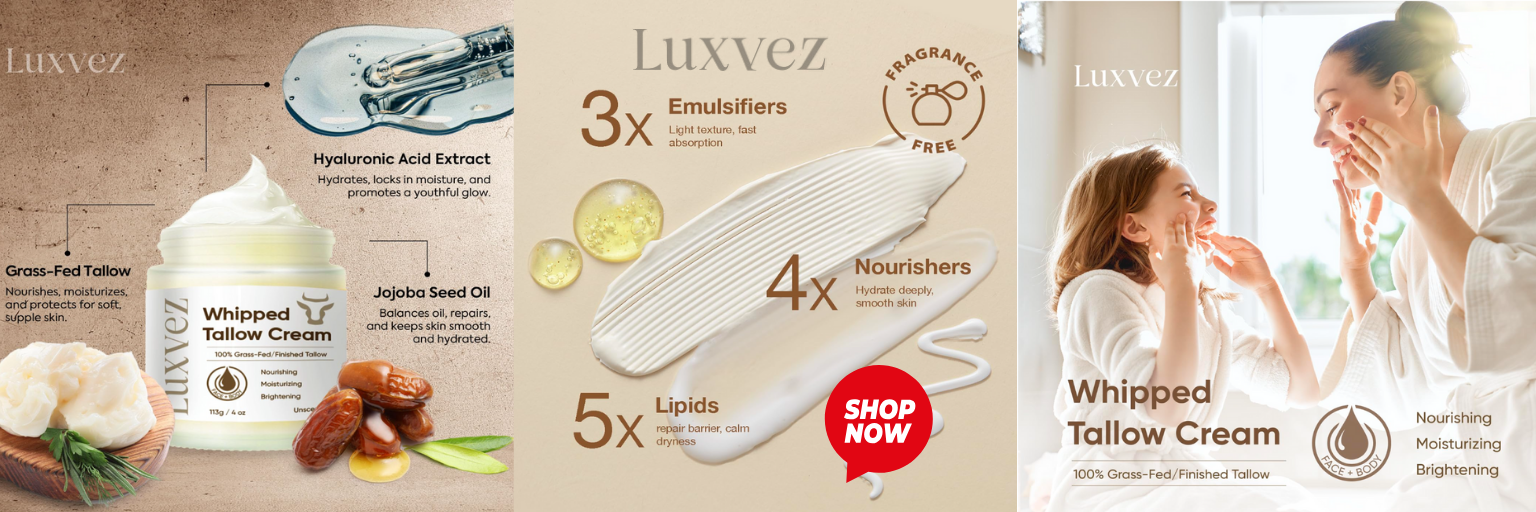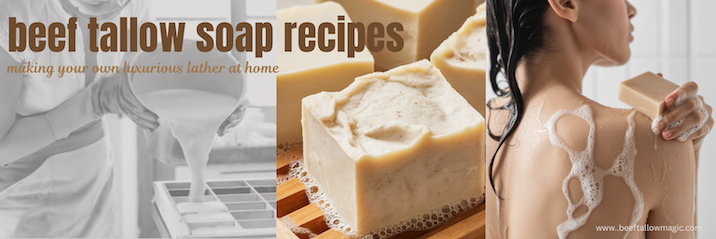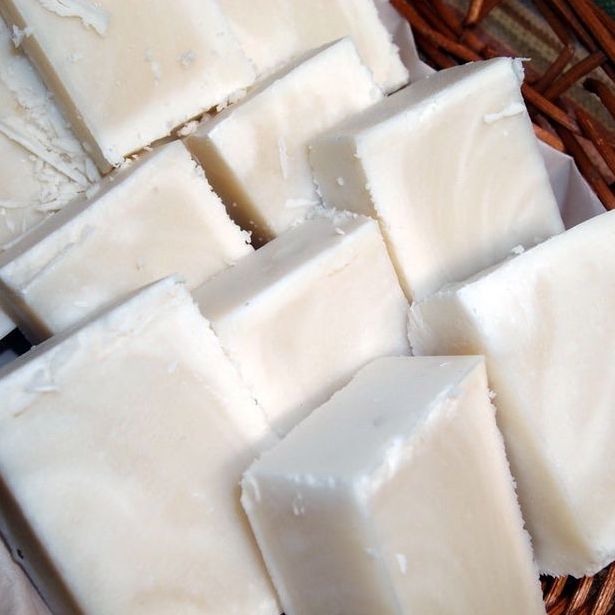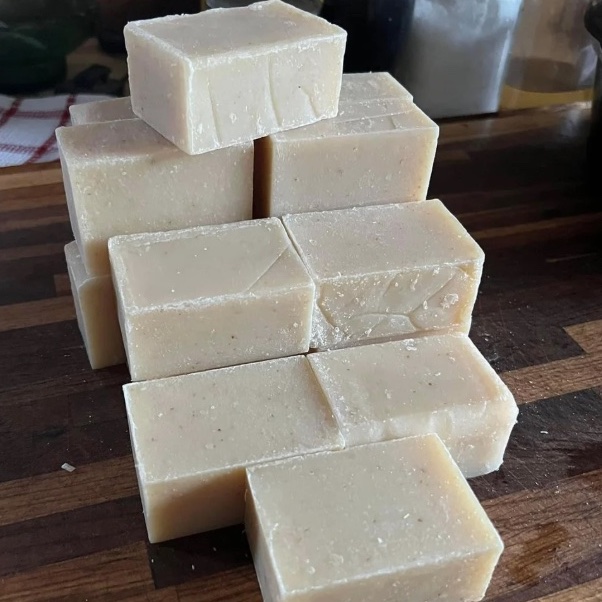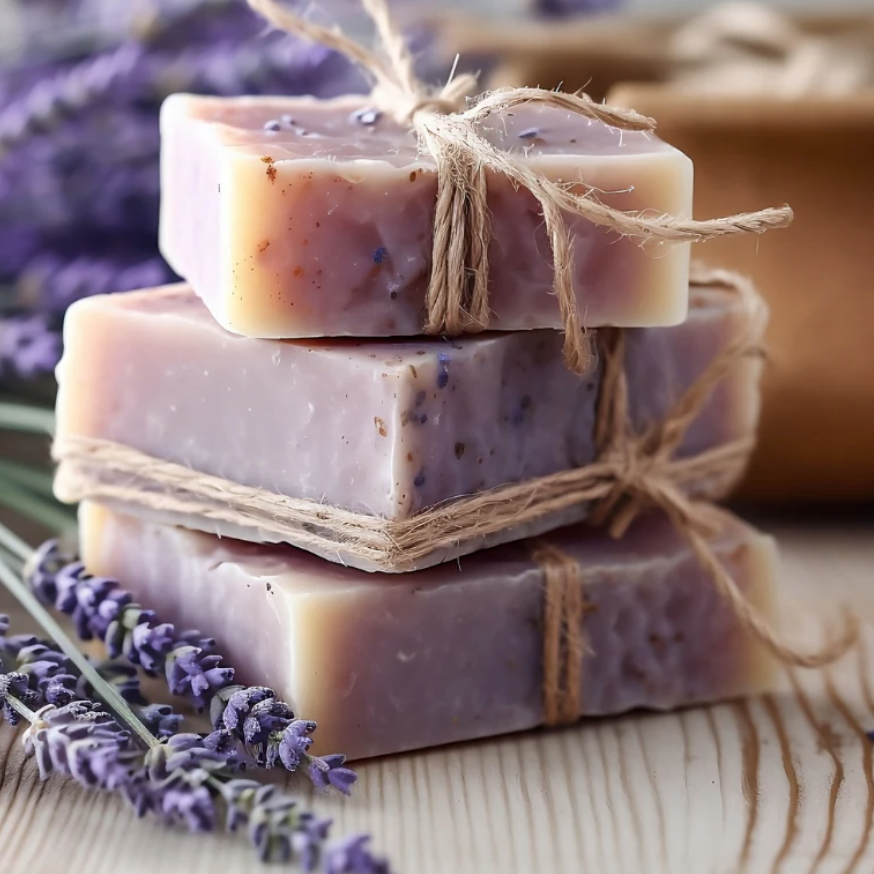Making soap with beef tallow is a time-tested craft that delivers both practical and skin-friendly results. Tallow is packed with vitamins A, D, E, and K, along with fatty acids that closely mirror those in human skin, making it deeply nourishing and moisturizing. This natural ingredient supports skin health while helping soap bars remain firm, long-lasting, and resistant to melting away too quickly. In fact, many traditional beef tallow soap recipes are prized for creating a rich, creamy lather that gently cleanses without stripping the skin. By blending the skincare benefits of tallow with its proven performance in soap making, beef tallow soap recipes continue to stand out as a reliable choice for those who want both natural care and high-quality handmade soap.
Why Use Tallow in Soap?
- Durable bars: Tallow-based soap is firm, long-lasting, doesn’t dissolve quickly.
- Creamy lather: Creates dense, fluffy bubbles that feel luxurious.
- Nourishing profile: Tallow’s fatty acids help moisturize and protect the skin barrier.
- Zero-waste Sustainability: Helps reduce waste and supports sustainable living.
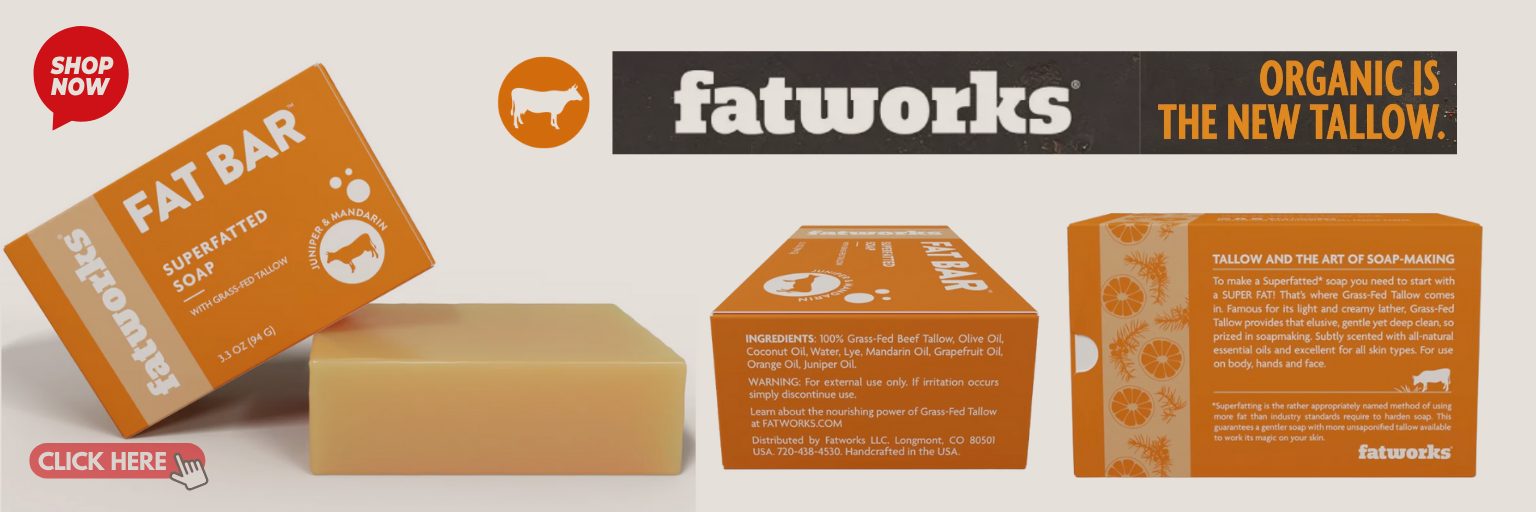
Beef Tallow Soap Recipe: Hot and Cold Process Methods
This beef tallow soap recipe is perfect for beginners who want a long-lasting, moisturizing bar made with simple, nourishing ingredients. Tallow is prized in traditional soap-making because it creates a firm, durable bar with creamy lather. Blended with coconut oil for cleansing and olive oil for moisture, this recipe produces soap suitable for all skin types, even sensitive skin.
Beef Tallow Soap Recipe: Hot Process Method
Ingredients
- 15 oz beef tallow (rendered)
- 7.5 oz coconut oil
- 7.5 oz olive oil
- 11.4 oz distilled water
- 4.3 oz lye (sodium hydroxide)
- 0.5–1 oz essential oil (optional)
Carrier Oils: Jojoba, Avocado, etc..
Essential Oils: Bergamot, Frankincense, Lavender, etc..
Equipment Needed
- 8-quart slow cooker or crock pot
- Immersion blender
- Digital scale
- Heat-resistant glass bowls or measuring cups
- Long-handled spoon or spatula
- Protective gear: gloves, safety goggles, long-sleeved shirt
- Soap mold (lined bread pan or silicone mold)
- Thermometer (optional, for adding essential oils)
Instructions
- Measure ingredients: Carefully weigh all oils, water, and lye.
- Melt oils: Place tallow, coconut oil, and olive oil in the slow cooker on low heat until nearly melted.
- Mix lye water: Wearing gloves and goggles, add lye crystals slowly into water (never the reverse). Stir until dissolved. Allow to clear and cool slightly.
- Add lye to oils: Pour lye solution into melted oils in the slow cooker. Stir gently.
- Blend to trace: Whip with immersion blender to pudding consistency (“trace”).
- Cook: Cover & cook on low heat, stirring every 10–15 min, for 45–60 min.
- Check readiness: Look for mashed-potato texture. Ideal pH of 8 – 10
- Add essential oils: If using, wait until mixture cools to 140°F before stirring in oils.
- Mold: Spoon soap into molds, tap to remove air bubbles, and let set 24 hours.
- Cut and cure: Slice into bars. Use immediately or let cure 1 week for firmer bar.
Frequently Asked Questions
Q: How many bars will this recipe make?
A: Roughly 10 bars at about 3.5 ounces each, depending on your mold and cut size.
Q: Can I swap oils?
A: Yes, but every oil has a different saponification value. Use a soap calculator to adjust lye accordingly if substituting oils like shea butter or lard.
Q: Can this recipe be made cold process?
A: Yes. The same proportions can be used for cold process with proper curing time.
Q: What does “superfatting” mean?
A: This recipe is superfatted to 5%, meaning 5% of oils remain unreacted in the bar, adding moisture and preventing dryness.
Tips for Success
- Always add lye to water, never the other way around.
- Work in a ventilated space and wear protective gear.
- Allow bars to cure for 1–2 weeks for extra hardness, even though hot process soap can be used right away.
- Experiment with natural additives like clays, herbs, or ground oats for unique variations.
Conclusion
This hot process beef tallow soap recipe is beginner-friendly, reliable, and produces beautifully moisturizing bars. With simple oils and straightforward steps, you’ll create natural soap that is safe, sustainable, and luxurious.
Beef Tallow Soap Recipe: Cold Process Method
Ingredients
- 408 g beef tallow (rendered)
- 23 g coconut oil
- 23 g castor oil
- 120 g distilled water
- 60 g lye (sodium hydroxide)
Essential Oils: Cedarwood, Geranium, Lavender, Sage etc..
Equipment Needed
- Steel Cooking Pot
- Immersion blender
- Digital scale
- Heat-resistant glass bowls or measuring cups
- Long-handled spoon or spatula
- Protective gear: gloves, safety goggles, long-sleeved shirt
- Soap mold (silicone mold – 6 Part)
- Thermometer (optional, for adding essential oils)
Instructions
- Prepare Work Area: Ensure your work area is well-ventilated, wear protective clothing, and have all ingredients and equipment measured and ready. Keep pets and children away during soap-making.
- Make Lye Solution: Slowly add lye crystals into distilled water while stirring (never add water to lye). Allow the mixture to cool to around 125°F (52°C). Work in a safe, ventilated space and avoid inhaling fumes.
- Melt oils: Place tallow, coconut oil, and olive oil in the slow cooker on low heat until nearly melted.
- Bring to Trace: Pour the cooled lye solution into the oils. Blend with an immersion blender, alternating between pulsing and stirring, until the mixture reaches light trace (custard-like consistency).
- Add Essential Oils (Optional): Stir in essential oils at trace to mask any remaining scent of tallow. The batter will thicken further.
- Molding the Soap: Pour the soap batter into silicone molds. Smooth the tops or add designs if desired. Leave in the mold for 48 hours.
- Curing the Soap Unmold after 2 days. Place bars on parchment paper in a cool, dry, airy space. Cure for at least 4 weeks to ensure hardness and mildness before use.
Points to Remember
- This recipe is superfatted at 5% and uses a 33% lye concentration.
- If using beef tallow, increase lye to 62 g (2.19 oz) per 454 g batch.
- Other tallows (goat, deer, bear) can be swapped without changing lye amounts.
- Soap has a shelf life of up to 2 years depending on oil freshness.
Conclusion
This cold process beef tallow soap recipe is simple, sustainable, and produces creamy, nourishing bars. Whether you render your own fat or purchase ready-made tallow, you’ll enjoy crafting natural soap with a long tradition of skincare benefits.
Tallow Lavender Rosemary Soap Recipe
Ingredients
- 16 oz olive oil
- 10 oz coconut oil
- 8 oz beef tallow
- 4 oz castor oil
- 12 oz distilled water
- 4.5 oz lye (sodium hydroxide)
- 1 oz lavender oil
- 0.5 oz rosemary oil
- 1 tbsp dried lavender buds (opt)
- 1 tbsp dried rosemary leaves (opt)
Equipment Needed
- Steel Cooking Pot
- Immersion blender
- Digital scale
- Heat-resistant glass bowls or measuring cups
- Long-handled spoon or spatula
- Protective gear: gloves, safety goggles, long-sleeved shirt
- Soap mold (silicone mold – 6 Part)
- Thermometer (optional, for adding essential oils)
Instructions
- Prepare the lye solution: In a heat-safe container, slowly add the lye to distilled water (never the other way around) and stir until dissolved. Set aside to cool.
- Melt oils and tallow: Combine olive oil, coconut oil, tallow, and castor oil in a large pot. Gently heat until fully melted, then let cool to about 100–110°F.
- Combine lye and oils: When both the oils and lye solution are at similar temperatures, slowly pour the lye mixture into the oils. Blend with a stick blender until light trace forms.
- Add herbs and oils: Stir in lavender and rosemary essential oils. Fold in dried herbs if desired.
- Pour into mold: Transfer the soap mixture into a lined mold, smoothing the top.
- Cure: Let sit for 24–48 hours until firm, then cut into bars. Cure the bars for 4–6 weeks in a cool, dry place before use.
Tips & Variations
- Try adding goat’s milk for extra creaminess.
- Use lavender buds for a floral touch, or omit herbs for a smooth bar.
- Experiment with swirls using natural colorants like spirulina or clay.
Conclusion
Making lavender rosemary soap at home is rewarding and creates a bar that’s as fragrant as it is nourishing. With this recipe, you’ll have a batch of handmade soap that delights the senses while being gentle on the skin.
Classic Pure Beef Tallow Soap Recipe
If you are looking for simplicity, here is a pure, unaltered beef tallow soap recipe without carrier oils or essential oils.
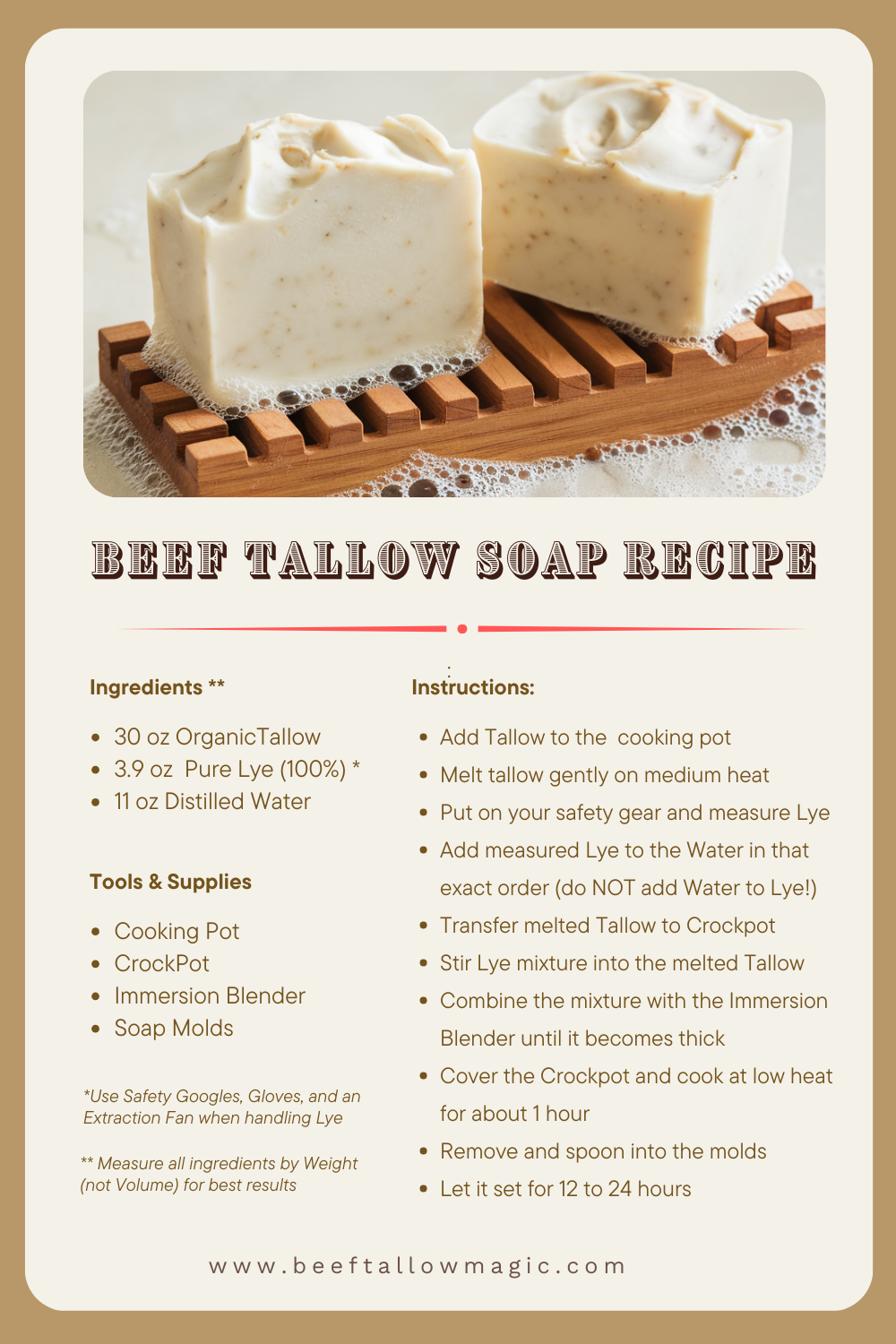
Where to Get Tallow
Good cooks, like good soap-makers are only as good as their ingredients. A rich, nourishing tallow-based soap must begin with – wait for it – a great tallow. And that fat should be organic, grass-fed, leaf-fat which produces the cleanest tallow. Now you can render your own tallow from beef-suet, or you can find a high quality, shelf-stable tallow from a trusted farm-source. Check out our discussion about rendering beef fat for tallow , or see below for some good candidates.
1. Premium Grass Fed Beef Tallow Fat: Fat Lady Tallow
This is a clean, high-quality tallow ideal for skincare, cooking, and crafting. Made in Wisconsin from 100% grass-fed, 100% grass-finished, humanely raised cattle, it is pure and minimally processed.
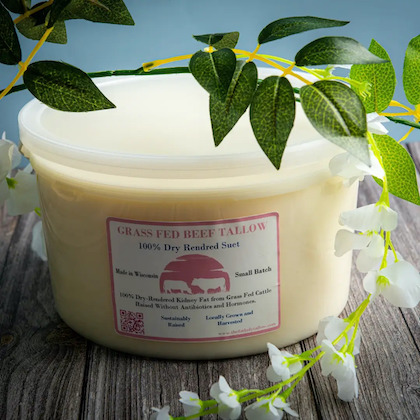
- dry-rendered, double-filtered
- USDA inspected
- natural – medium hard consistency
- small-batch production
- all natural chemical free
Spectacular! Great product for soap making! No beef smell and consistent product of all the buckets I ordered. – Sherry D.
2. Grass Fed Beef Tallow: AllFat
Produced in British Columbia from 100% Canadian cattle, this kidney fat tallow is a versatile fat that works beautifully for cooking, baking, and as a base in crafting homemade moisturizers, soaps, and candles.
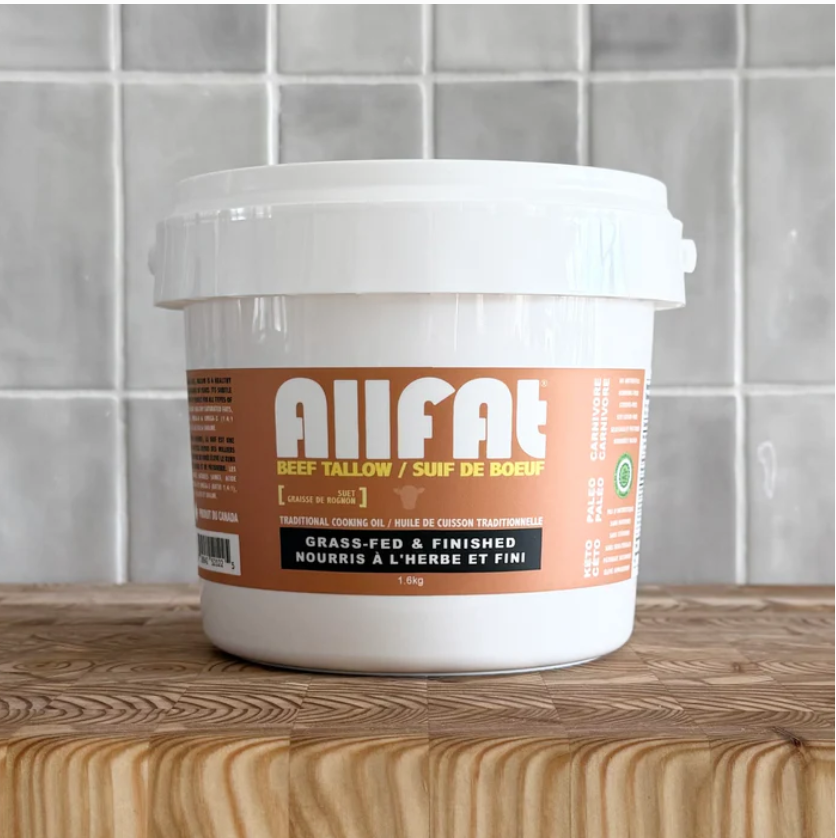
- 100% grass fed & finished
- halal certified
- 1.6 kg tubs
- antibiotic & hormone free
I bought my first tub of tallow last year and just resupplied. I like the tallow so much I also purchased a second tub for a house warming gift for a friend. I am a carnivore and cook daily with the tallow. Excellent product, all it is described. – Jason R.
FAQ
Why use beef tallow in soap making?
Beef tallow creates a hard, long-lasting bar with a creamy lather that gently cleanses without drying the skin.
What is “trace” in soap making?
Trace is the stage when oils and lye water blend into a smooth, pudding-like texture, signaling it’s time to pour into molds.
What does “super-fatting” mean?
Super-fatting is the practice of leaving extra oils un-saponified, making the soap more moisturizing and gentle on skin.
Do I need special equipment to make beef tallow soap?
Basic tools like a stainless steel pot, stick blender, digital scale, and soap molds are usually enough.
Is beef tallow soap good for sensitive skin?
Yes, beef tallow contains vitamins and fatty acids that nourish skin, making it suitable for sensitive or dry types.
How long does homemade beef tallow soap need to cure?
Most tallow soaps require 4–6 weeks of curing to harden fully and become gentle for use.
Wrapping It All Up
These beef tallow soap recipes bring homesteading traditions into your modern kitchen. By using rendered fat and simple equipment, you can create functional, long-lasting, and sustainable soap bars with just a few ingredients. Whether you opt for pure tallow or the tallow-coconut blend, this method proves that soap-making doesn’t have to be complicated—or expensive.
